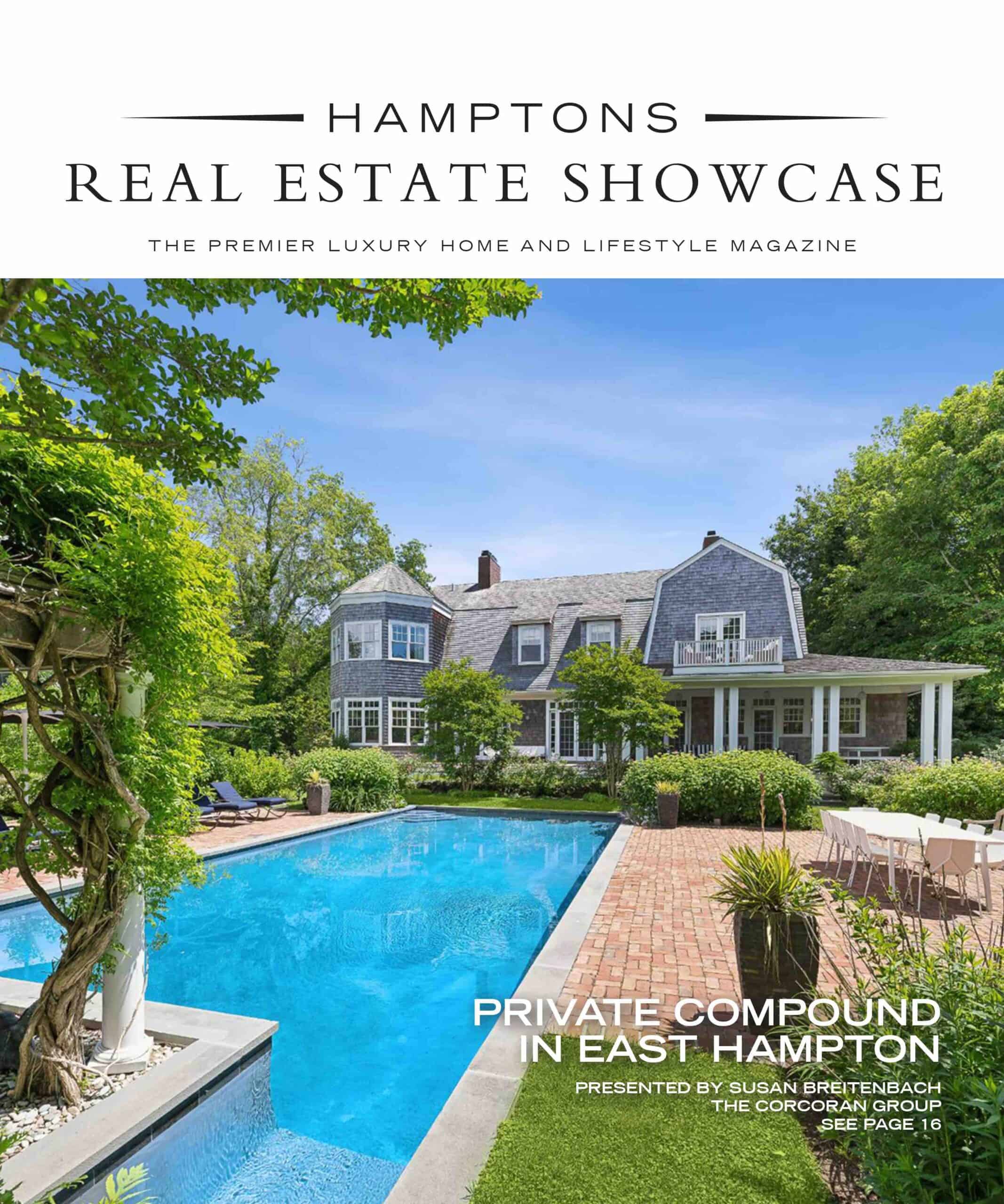Stories abound about houses that were on the market forever and sold the day after they were staged. Whether true or apocryphal, staging – decluttering and redecorating a house to appeal to buyers — is a subject that creates much agita among sellers. It’s a collective case of stage fright. Sellers object to the cost, according to Angela Boyer-Stump, an agent with Sotheby’s. But it would be money well spent. For an un-staged house, she believes, a seller often makes a lower offer. “They know it’s just furniture, but they still can’t get comfortable paying a number knowing the seller should have made the effort.” Her advice? “If you stage it we’ll find a buyer.”
The big question is: Why do staged houses work? Though the seller may have great taste (and what seller doesn’t think he does?), there is always an aesthetic sensibility of the moment that real estate pros and stagers are in tune with. “A stager’s talent is to know what people like,” she says. “It’s hard to figure it out for yourself.”
The first rule of a stager is to make spaces feel, well, spacious – open, airy, and bright. Stagers agree on at least one thing: People have too much stuff. As with a manuscript, stagers “edit” a space. Family pictures begone! Liz Kramer and Deirdre Guest, founders of Homework in the Hamptons, an interior design and staging company, believe in “depersonalizing” the home environment so that it looks more like an upscale hotel than someone’s home. The key is to create a “neutral” canvas onto which prospective buyers can project their own lifestyle needs and wants.
In home staging, white is the new black. That goes for upholstery to towels and walls, for which the
ladies of Homework prefer Benjamin Moore 01 White, a paint they claim is “the whitest white.” No matter how much you fancy purple, chances are no one else will. Toodaloo to dark carpets. Sisal adds to the “beach look.” Buyers come to the Hamptons for a casual lifestyle – biking, paddling, picnicking. Persian rugs and ornate chandeliers belong on Park Avenue, not Mecox Road.
But, how sterile, you might opine. Not to worry. Stagers such as Donna Dazzo of Designed to Appeal, reach into their bags of tricks to express personality through bursts of color – blues, greens, oranges — distributed discreetly, of course. Vibrant throw pillows, the stager’s weapon of choice, abound as do carefully chosen artwork and accent pieces.
“Buyers today want no fuss, no muss,” says Ms. Guest. Unless they’re the sort of buyer who wants to “tear it down and start over, they want a turnkey property,” says Boyer-Stump. “They want to move in and relax, they don’t want to start meeting with decorators.” She just sold a property staged by Michael Murray of Aria Design Consultants of Southampton who provided everything including table settings, toasters, pots and pans, even toothbrushes. Because of such attention to detail, “It had three over-ask offers.”
Going a step further than most stagers, Murray, who calls himself a “turnaround specialist,” describes his typical client as one who “isn’t buying a house. He’s checking in.” His job is to identify a house’s potential and offer “cheap and cheerful ideas as to optimize the its potential.” With both a design and construction background, he is able to point out where to spend for the highest return. A realtor, he says, can make suggestions “whose costs are catastrophic. It’s one thing to say I want a new vanity, another to know the condition of the pipes and valves” to determine if a change is cost-effective.
A kitchen may beg for a new granite counter, but not when “it has a 90-percent chance of being demolished.” In that case he has an ingenious srategy. He will suggest that a homeowner place a placard on the counter stating, “$4500 for granite”– letting the buyer know that the seller is willing to compensate him financially rather than make the changes himself. “No matter how great we think our taste is, rarely will it match the buyer’s, especially a sophisticated Hamptons buyer.”
Heather Bryce is a longtime resident of the South Fork, who has worked in
interior design and is currently a principal in Eat-Hamptons, a new catering
company with “veteran chefs.”













![Experience the epitome of coastal country living in this newly constructed, quality craftsmanship waterfront home on James Creek, leading to Peconic Bay. With 80± ft. of prime waterfront, 4060 Ole Jule Lane showcases thoughtfully landscaped grounds, a bluestone patio, outdoor shower, and a refreshing saltwater pool. Represented by @nataliealewis of @coldwellbanker. [link in bio]](https://hamptonsrealestateshowcase.com/wp-content/uploads/sb-instagram-feed-images/467188671_18474458155030135_7164624532118372206_nfull.webp)
![Welcome to 122 Mill Pond Lane, an impeccably conceived and meticulously maintained residence in a dramatic west-facing setting on Mill Pond. Throughout the home are thoughtfully considered elements that reinforce the home’s clean, modern sensibility. Represented by @kraelyllahamptons of @hamptonsrealestate. [link in bio]](https://hamptonsrealestateshowcase.com/wp-content/uploads/sb-instagram-feed-images/466787127_18474263443030135_2753720635361764689_nfull.webp)

![Perched atop the dunes at Louse Point sits 2 picturesque homes at 88 & 86 Louse Point Road, both perfect for enjoying all seasons that East Hampton has to offer. Each thoughtfully designed home maximizes the topography to allow seamless indoor/outdoor living and entertaining. Represented by @petrieteam of @compass. [link in bio]](https://hamptonsrealestateshowcase.com/wp-content/uploads/sb-instagram-feed-images/466619407_18473886082030135_7330054085188815713_nfull.jpg)
![Get cozy every Friday at Canoe Place Inn! 🍫🔥 Gather around the fire on our Garden Lawn for Fireside Fridays all season long, where evenings are warmed up with hot cider, hot chocolate, s’mores, and cocktails. Enjoy live acoustic music on select dates, and with your first drink, receive a complimentary s'mores kit! [link in bio]](https://hamptonsrealestateshowcase.com/wp-content/uploads/sb-instagram-feed-images/466374901_1761070534297706_6837753985329213061_nfull.jpg)
![Musical Superstar and Sag Harbor resident Billy Joel has listed his 26± acre Long Island estate for $50M. Assembled over time on adjoining parcels, the Centre Island compound features a 20,000± sq. ft. main home plus several additional structures—all with access to 2,000± ft. of private shoreline boasting a dock and a boat ramp. [link in bio]](https://hamptonsrealestateshowcase.com/wp-content/uploads/sb-instagram-feed-images/465973748_18473309701030135_6935355293028123088_nfull.jpg)
![51 Mashomuck Drive presents an exquisite estate spanning 1.1± acres with 145± ft. of bulk-headed waterfront. The main residence, offering captivating vistas of Sag Harbor Bay and Shelter Island, encompasses 7,800± sq. ft. of living space, boasting 7 beds, 9.5 baths, and a media room/gym area. This turn-key retreat embodies opulence and comfort, inviting a life of unparalleled luxury. Represented by @cindyascholtz and @jvonhagn of @compass. [link in bio]](https://hamptonsrealestateshowcase.com/wp-content/uploads/sb-instagram-feed-images/466104990_18473128246030135_2802294086252776198_nfull.jpg)
![In a prime East Hampton Village location, 64 West End Avenue is surrounded by preserved land and offers complete privacy situated on the shores of Georgica Pond with breathtaking sunset views. With both ocean and pond views, residents can indulge in swimming and sunbathing at the waterside gunite pool. Represented by @marthagundersenluxurybroker and @paulbrennanrealestate of @douglaselliman. [link in bio]](https://hamptonsrealestateshowcase.com/wp-content/uploads/sb-instagram-feed-images/465766544_18472922440030135_758297788107249653_nfull.jpg)
